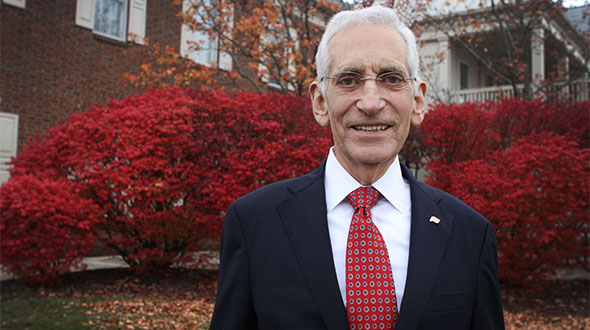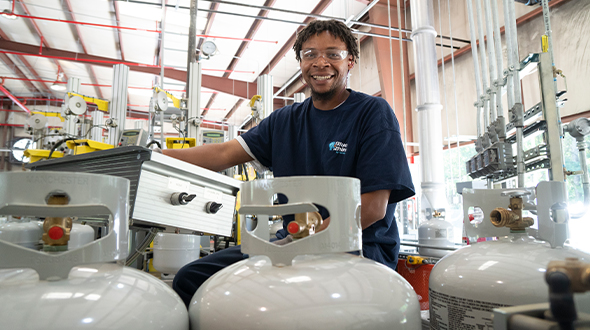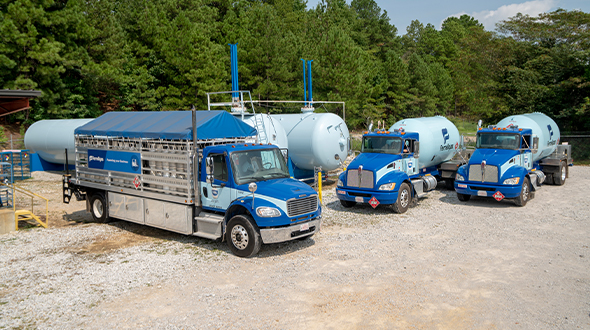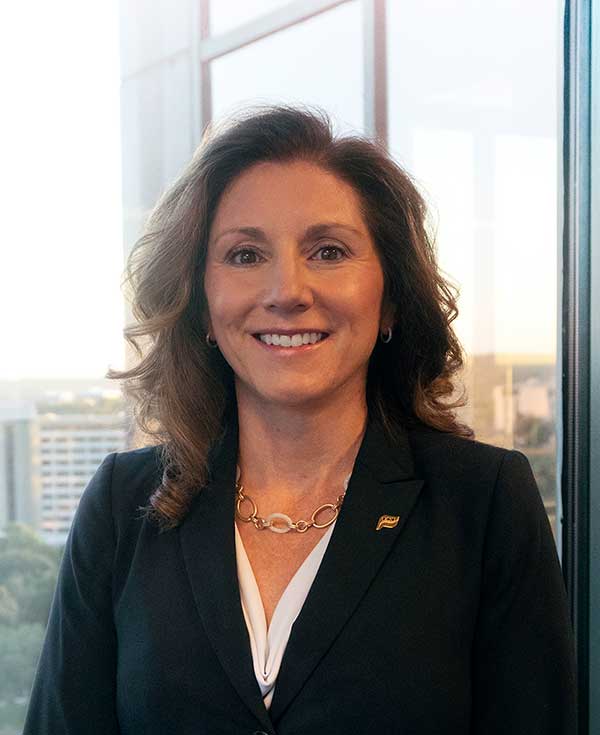Jim Ferrell works to transform Ferrellgas
Jim Ferrell has a way of returning to his roots.
The former Army infantry officer did just that in 1965 when his ailing father required help with the family’s butane business in small-town Kansas.
Ferrell’s focus at the time centered more on selling the struggling business and moving forward in his own life than on delving into the day-to-day operations of the mom-and-pop shop known as A.C. Ferrell Butane Gas Co. But Ferrell took a hands-on approach because the business required the attention, and, before long, he was acquiring competitors and growing the company into what would become Ferrellgas, the second-largest retail propane operation in the U.S.

Jim Ferrell is the chairman, CEO and president of Ferrellgas. Photo courtesy of Ferrellgas
Nearly five years ago, that established, decades-old company with the familiar name and recognizable blue branding, was struggling to survive. By that time, Ferrell had distanced himself from the operation, gone for about 10 years and busy with his other business interests before he, again, made the decision to return. His family’s company required more attention.
Ironically, Ferrell held many of the same thoughts that he did upon his return in 1965: “I volunteered not thinking it would be that long or that big of a job,” he says this time around.
He discovered otherwise.
“In retrospect, it looks like I came back to save the propane company,” he says. “I came back to save the company.”
Hard times
The trouble for Ferrellgas began when the company diversified into midstream, Ferrell writes in an op-ed that he penned earlier this year about the state of the company.
It had acquired Sable Environmental in 2014 for about $125 million and Bridger Logistics in 2015 for more than $800 million. These companies’ services included saltwater disposal for oil and gas producers involved in shale-drilling processes. At the time, Ferrellgas said it would continue to expand inside and outside its core propane operations as opportunities presented themselves.
But, Ferrell writes, the diversification attempt failed due to a flawed strategy, and he returned in late 2016 as interim CEO to replace senior executives and reposition the company.

Blue Rhino, the tank exchange segment of Ferrellgas, has grown operations to more than 60,000 selling locations throughout the U.S. and Puerto Rico. Photo courtesy of Ferrellgas
Ferrellgas moved in 2018 to exit the midstream segment and return its focus to retail propane distribution and its Blue Rhino tank exchange operations.
Asked if he finds similarities between his involvement in 1965 and 2016, Ferrell says, “You don’t know when you start out in something exactly what you’re getting into. I have a personality that wants to make things better. … Is it the same ‘making it better’ that I had at the beginning? No – not when you’ve got two bulk trucks, a boom truck and a pickup” in one location versus selling over 600 million gallons of propane to nearly 800,000 customers throughout the U.S. and Puerto Rico.
The fallout continued in 2019 when Ferrellgas delisted voluntarily from the New York Stock Exchange (NYSE) – Ferrell took Ferrellgas Partners public in 1994. The company had fallen out of compliance with the NYSE because the average closing price of its common units over a consecutive 30-day trading period was less than $1 per unit.
In June 2020, Ferrellgas Partners, the parent company of Ferrellgas, fell into default of a bond issued at that level, necessitating a voluntary bankruptcy of the parent in order to deleverage its debt. Meanwhile, Ferrellgas operating company debt was coming due in May 2021.
“The holding company was in default, and looming ahead was an operating company default that would have doomed the company,” Ferrell writes.
What ensued late in 2020 was a complete restructuring of the holding company and operating company balance sheets “that gives us a chance for a very long life,” he adds.
The restructuring preserves company jobs in Kansas City and elsewhere; extends debt maturities; allows for a solid credit rating; and preserves the company’s public equity and employee stock ownership plan, Ferrell details.
“We had a matrix of people without whom I could not have done it,” he says.
Ferrellgas’ first-quarter 2021 results – with increases in gross profit (by $4.1 million or about 3 percent compared to the prior-year period) and operating income (by $7.1 million), and a decrease in operating expenses (by $5.5 million or 5 percent) – revealed its renewed focus on operational performance and efficiencies. The company now trades on the OTC Markets.
Leaning on logistics, technology

Ferrellgas is focused on becoming a “high-performing logistics company.” Photo courtesy of Ferrellgas
A logistics company awaited on the other side of the restructuring, according to Ferrell and COO Tamria Zertuche. During a Zoom call, the leaders occasionally relate Ferrellgas’ journey to sports; they view the company in the bottom of the fourth of a nine-inning game.
“We want to be viewed as that high-performing logistics company that does the final mile better than anyone and takes care of our customers in a way that’s unmatched,” Zertuche says.

Zertuche
Zertuche came to Ferrellgas in 2004 when it acquired Blue Rhino and has ascended up the ladder after leading the tank exchange company’s information technology department.
“I came up through the technology side of the company,” she says. “Immediately upon starting with Blue Rhino, I was part of the leadership team working with operations. My hand has been in operations for over 17 years, but I’ve been very technology focused, leading a technology organization.”
Zertuche was one of the first to meet with Ferrell when he returned to Ferrellgas in 2016. She recalls the discussion centering on technology. Blue Rhino had already deployed such tools as mobile technology, forecasting algorithms and electronic payments, and the two planned to improve and develop technology across the company’s entire supply chain.
“All of those tenets of technology are now part of what is the retail side of the business, and that has happened in earnest as Jim came back,” she says.
In addition, Ferrell says Ferrellgas is a “virtual company” now, since the onset of the pandemic, and will continue to utilize video conferencing and remote work as a way to enhance efficiencies.
Meanwhile, Ferrellgas looks at Blue Rhino as part of its companywide success story. It’s grown operations to more than 60,000 selling locations, to the point that “we’re having trouble keeping up,” Ferrell says.
With Ferrellgas’ renewed focus on its transformation, Ferrell aims for the company to continue its growth organically and through consolidation of the industry.
The company is also putting a greater emphasis on its future with the 2020 launch of the Ferrellgas Management Development Program. The company says the program is an introduction into the intricacies of the business and is an answer to the growing number of employees seeking pathways to positions of leadership across the country.
“The Management Development Program gives us the chance to train the brightest minds and give them the tools they need to succeed at Ferrellgas, Blue Rhino and beyond,” says Joe Figueroa, director of the program.
Just how long Ferrell remains a part of the company post restructuring is not yet known, but he says he’s not going anywhere: “I may appear to be over the hill; at least I’m not under the hill,” jokes the LP Gas Hall of Famer.
In the end, he adds, the board of directors will decide his future and also select the next CEO. For now, he believes the process is working.
“Am I satisfied now? No,” Ferrell says. “But we are functioning at an extremely high level. This is a cutting-edge company in a new era.”
















